Contents |
Overview
"Plan 9 from Outer Space" and other films by Ed Wood, Jr. were among the earliest films to attract devotees who revelled in the incompetences of the products and delighting in finding new ones on repeated viewing, and to be said to have a "cult following". Indeed, Wood may be said to be the first identified "cult auteur". Other extremely low-budget science fiction and horror films of the 1950s ("Robot Monster", e.g.), along with exploitation films of the 1930s which surfaced in the burgeoning public domain home video marketplace during the 1980s ("Reefer Madness", e.g.) were added to the informal canon.
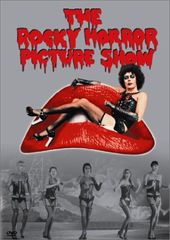 The Rocky Horror Picture Show (1975).
The Rocky Horror Picture Show (1975).
The Rocky Horror Picture Show is possibly the best-known and longest-running cult film in the U.S. The movie satirizes conventions of science fiction and horror films of its time, and includes elements of transvestitism, incest and homosexuality — all within the context of a Musical film. Rocky Horror (as its fans casually refer to it) received little critical attention or mainstream cinema exhibition when first released in 1975 but, in short order, found fans who repeatedly showed up at midnight screenings at inexpensive neighborhood cinemas, dressed in costume and "participating" in the film by doing such things as throwing rice during its wedding scene. In this case, the film intentionally ridiculed its own subject matter, therewith entering into the spirit of sarcastic fun surrounding the "attainment" of cult status.
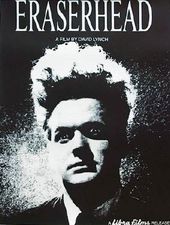 Eraserhead (1977).
Eraserhead (1977).
Many significant cult films are independently made and were not expected by their creators to have much mainstream success. Like Rocky Horror, Night of the Living Dead, Pink Flamingos, Female Trouble, The Hills Have Eyes and Eraserhead have all been commonly acknowledged as having become cult films.
The 1992 Disney musical Newsies, a box-office flop, gained a passionate cult following, largely based online in the form of electronic mailing lists, fanfiction, and complex historically-inspired Role Play websites known as "lodging houses". This following may have been a factor in the eventual release of the movie on DVD and of its soundtrack.
Network television, cable television and pay-per-view stations have also changed the nature of cult films. Despite failing to meet box office expectations, Blade Runner was a favorite of early pay-per-view and HBO. Repeated showings on Comedy Central helped popularize Office Space and Half Baked.
In most cases, these films tend to enjoy long runs on video, thus being issued in more video "runs" with more copies than other movies.
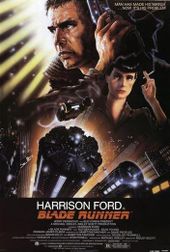 Blade Runner (1982).
Blade Runner (1982).
The box office bomb Office Space managed to financially redeem itself when word-of-mouth made it a popular video rental, and Fight Club and Mulholland Drive have earned considerably more in DVD sales than they did in movie theaters. Also, cult movies are more likely to be issued on newer video technology in the technology's early days than other films.
 Office Space (1999).
Office Space (1999).
Although films of all types of genres and plot conventions may become cult films, the horror and science fiction and experimental film genres have become the focus of those wanting to identify a film as a cult film, perhaps due to the relatively young and cynical nature of these genres' fan bases. The identification of a film as having "cult status" is particularly dependent upon genex, whose members are most invested in the concept and its agreed-upon films.
Some contend that, in rare cases, a film can be both a huge, major studio release and a cult film, because a small, devoted following exists within the film’s larger audience (i.e., 2001: A Space Odyssey, The Matrix, Taxi Driver and the Star Wars series.) With advances in web-based film distribution, films such as Jamie Cope's Life of a Tennis Ball can develop a cult following even without being commerically distributed.
Cult films within a particular culture
Occasionally, a film can become the object of a cult following within a particular region or culture if it has some unusual significance to that region or culture.
An example is the cult status of British comedic actor Norman Wisdom’s films in Albania. Wisdom’s films, in which he usually played a family man worker who outsmarts his boss, were some of the few Western films considered acceptable by the country’s communist rulers, thus Albanians grew familiar and attached to Wisdom. Curiously, he and his films are now acquiring nostalgic cult status in Britain. Similarly, the American film It's a Wonderful Life, which features an exploitative capitalist as its villain, was allowed in the USSR, giving it a cult status in Russia.
Another example is the place of The Wizard of Oz in American gay culture. Although a widely viewed and historically important film in greater American culture, it has gained a special meaning to many gay men who see probably unintended gay themes in the film. Gay men sometimes refer to themselves as "friends of Dorothy". Singing in the Rain is another film adopted by the American gay subculture which used to regularly be shown at retrospect houses during the 1980s and early 1990s for extended runs.
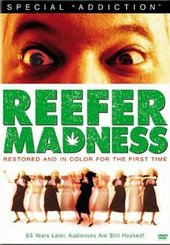 The 2004 DVD edition of Reefer Madness,
which makes obvious reference to its cult
status.
The 2004 DVD edition of Reefer Madness,
which makes obvious reference to its cult
status.
The 1936 anti-marijuana propaganda film Reefer Madness has become a cult film within stoner culture due to its humorously sensationalized, outdated and inaccurate descriptions of the effects of marijuana. 20th Century Fox and Legend Films released a colorized version of the film on DVD on April 20, 2004, an obvious reference to its ironic appeal (see 420 (cannabis culture)). The World War II-era Department of Agriculture film Hemp for Victory, encouraging the growing of hemp for war uses, has achieved a similar cult status.
British comedies have enjoyed a cult status in America. These films include the Black Adder and Monty Python series, most notably Monty Python and the Holy Grail.
Asian cinema, specifically Hong Kong and Japanese films, also has a cult following in the Western Hemisphere. Asian Cult Cinema consists of Hong Kong Martial Arts films, such as wuxia, and Japanese tokusatsu, primarily from the Daikaiju Eiga, and most anime. The Kaiju genre of films, while enjoying much mainstream popularity in Japan, have a large "cult following" in the U.S., particularly the Godzilla series of films.
So-bad-they're-good cult films
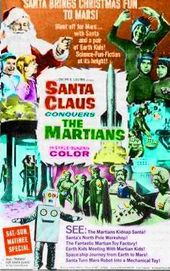 Santa Claus Conquers the Martians (1964).
Santa Claus Conquers the Martians (1964).
 Showgirls (1995).
Showgirls (1995).
Many films enjoy cult status because they are seen as ridiculously awful. The critic Michael Medved characterized examples of the "so bad it's good" class of low-budget cult film through books such as The Golden Turkey Awards. These films include such financially fruitless and critically scorned films as Mommie Dearest, Cool as Ice, "The Lost Skeleton of Cadavra", Boxing Helena, Showgirls, and Freddy Got Fingered, which have become inadvertent comedies to film buffs.
In other cases, little-known or forgotten films from the past are revived as cult films, largely because they are considered goofy and senseless by modern standards, with laughable special effects and corny plotlines. These include Eegah, The Beast Master, Santa Claus Conquers the Martians, The Creeping Terror, The Incredibly Strange Creatures Who Stopped Living and Became Mixed-Up Zombies, Attack of the 50ft. Woman and the works of Edward D. Wood, Jr. See also: Mystery Science Theater 3000. The Beastmaster is an example of the strange vectors which can lead to cult filmdom, as its reputation stems as much from ubiquitous cable-TV overplay as anything in the film itself.
These films should not be confused with comedic cult movies like The Toxic Avenger, Bad Taste, Army of Darkness, and the films of John Waters, which purposely utilize elements from films "so bad they're good" for comedic effect. For further explanation.
The upcoming film Snakes on a Plane has been possibly cited as such.
Cult film figures
Some actors and directors are primarily known for their work in cult films and often become cult figures because of that work. Some, such as Ridley Scott and Sam Raimi, eventually make successful, mainstream films while others continue to be known only to a small group of fans.
See also
Categories: Film genres




 216.73.216.81
216.73.216.81 User Stats:
User Stats:
 Today: 0
Today: 0 Yesterday: 0
Yesterday: 0 This Month: 0
This Month: 0 This Year: 0
This Year: 0 Total Users: 117
Total Users: 117 New Members:
New Members:
 216.73.xxx.xx
216.73.xxx.xx
 Server Time:
Server Time: